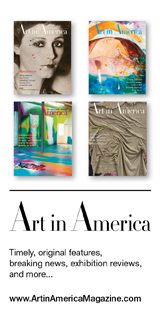auto-màtic: the implications of automation in architecture at Centre d'Arts Santa Mònica
29 June - 2 September ‘18
The “auto-màtic” exhibition, hosted at the Centre d'Art Santa Mònica, a former Renaissance convent in the heart of Barcelona’s La Rambla, converted into a contemporary art centre, addresses the limits and potential of generative drawing, by exploring how the Automation Revolution is shaping the work of architects, designers and creatives.
The research was developed within the framework of Machinic Protocols http://machinicprotocols.com, a project directed by Edouard Cabay, within IAAC's Master’s in Advanced Architecture: "the title ‘auto-màtic…’”, the curator explains “…is an homage to Jean Tinguely's Méta-matics, the series of machines that produce artwork and that investigate the forceful intrusion of technology in our society".
Raising questions on automation, reproducibility, and the role of arbitrary “accidents” as sources of creative experimentation, the exhibition gathers over 120 drawings that have been developed over the past three years, by more than 80 contributors from fields including computation, arts and design.
Casting aside the “hand of the artist”, each drawing results from imposed conditions rather than preconceived ideas. It is based on the principle of not designing the final form of a product, but enunciating the instructions that govern its production. Once the process has begun, it runs on its own and the “author” becomes a spectator. The protocol is the recipe, a set of instructions that dictate actions to be executed. Although they have been produced by different means, including people, robots, computers, and even by forces of nature such as wind and waves, they all share a set of common characteristics: they are always unique and their result cannot be anticipated; they are not created by an individual, but rather by a system composed of plural actors.
Two installations complete the exhibition path, focusing on performative drawing.
First, an electronically controlled array of eight fans blow towards the centre of a page, where a pen attached to a sail moves in the wind. In a context of reciprocity, where the pen and the fans dialogue, the machine never stops drawing, in a kind of perpetual dance.
The second installation is an experiment: 10.000 droplets of ink fall onto a moving canvas from a height of 15 metres. The mobile canvas moves at the rhythm of the falling drop, in order to form an orthogonal grid. Will the drop fall vertically and land in the precise position anticipated by the robot in order to shape a perfect grid, or will the movement of the air and other factors affect its trajectory?
Automation can incorporate deviations from original expectations, that can be read as imprecisions, arbitrariness or even accidents but, at the same time, may allow new outcomes to emerge. As a metaphor of the new age of uncertainty where anything is possible, the real intention of the exhibition is to develop an attitude towards creation, where designing is more about the process rather than envisaging an outcome.
The unexpected is yet to come.
























